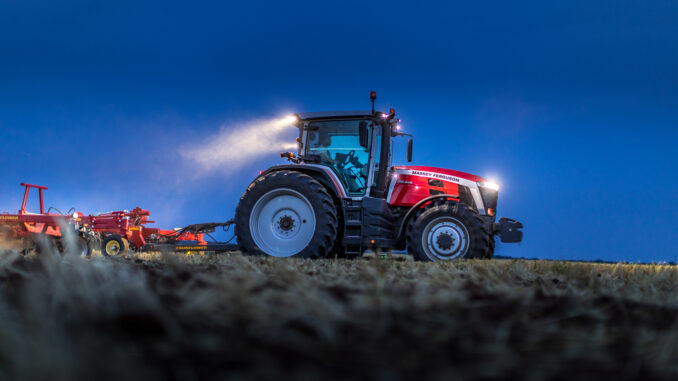
In the world of agriculture, few names resonate as strongly as Massey Ferguson.
With a history spanning over a century, this iconic brand has consistently delivered cutting-edge farming equipment, particularly tractors.
From its humble beginnings in Canada to its global recognition today, Massey Ferguson has been a pioneer in agricultural machinery, manufacturing tractors that have become indispensable to farmers worldwide.
In this article, we’ll delve into the rich history, the enduring legacy, and the popular models that have made Massey Ferguson a household name in farming communities.
A Brief History of Massey Ferguson
The story of Massey Ferguson begins in the early 19th century with Daniel Massey, a blacksmith and inventor, who settled in Newcastle, Ontario, Canada.
He started crafting simple farm implements and quickly gained a reputation for his innovative designs. In 1847, Daniel Massey founded the Newcastle Foundry and Machine Manufactory, which laid the groundwork for what would eventually become Massey-Harris.
Over time, the Massey-Harris Company expanded its product range, incorporating everything from reapers and binders to threshers. The acquisition of several other farm machinery manufacturers further solidified their presence in the agricultural industry. In 1930, Massey-Harris merged with Harry Ferguson’s company, creating a powerful partnership.
Harry Ferguson, an Irish engineer and inventor, brought to the table a revolutionary concept—the three-point hitch system. This system allowed for the attachment of various implements to tractors, making them more versatile and efficient.
This game-changing innovation laid the foundation for the modern tractor as we know it. The merger of Massey-Harris and Ferguson’s company in 1953 marked the birth of Massey Ferguson, which continued to refine and implement cutting-edge agricultural technology.
Popular Massey Ferguson Tractor Models
-
Massey Ferguson MF35 (1956)
The MF35 is often considered one of the most iconic tractors ever produced. It was the first tractor to feature the innovative three-point hitch system developed by Harry Ferguson. The MF35 was a small, reliable, and affordable tractor, which made it accessible to a wide range of farmers. Its success established Massey Ferguson as a dominant force in the agricultural machinery market.
-
Massey Ferguson 135 (1964)
Building on the success of the MF35, the MF135 continued to be a popular choice for small to medium-sized farms. It was known for its durability, ease of use, and versatility, with a wide range of available attachments. The MF135 was instrumental in driving mechanization in agriculture, allowing farmers to increase productivity and reduce manual labor.
-
Massey Ferguson 65 (1958)
The MF65 was a step up in power and performance, making it suitable for a wider range of farming tasks. It was known for its robust construction, and it was often used for heavier fieldwork. The MF65’s reputation for reliability and durability made it a favorite among farmers around the world.
-
Massey Ferguson 165 (1964)
The MF165 represented a significant improvement in tractor design and performance. With a more powerful engine, better hydraulic systems, and an improved transmission, it was a workhorse on many farms. Its versatility and comfort for operators made it a popular choice for those looking to upgrade from smaller models.
-
Massey Ferguson 200 Series (1976)
The 200 series, including models like the MF240, MF250, and MF265, were designed for a more global market. These tractors were known for their ruggedness, adaptability to various agricultural practices, and efficient fuel consumption. They became popular choices in many developing countries where reliability and low operating costs were crucial.
-
Massey Ferguson 300 Series (1986)
The 300 series, encompassing models like the MF375, MF385, and MF390, continued the tradition of reliability and versatility. These tractors were built to handle tough conditions and demanding tasks, from plowing fields to hauling heavy loads. They gained recognition for their power and endurance, making them ideal for larger farms and commercial operations.
-
Massey Ferguson 300 Series (2003)
Moving into the 21st century, Massey Ferguson continued to innovate with the introduction of the 5400 series. These tractors incorporated advanced technology, such as electronic control systems and more comfortable operator environments. They were designed to meet the demands of modern farming, offering increased productivity and efficiency.
-
Massey Ferguson 300 Series (2012)
The 7700 series represented a new level of power and performance. These tractors featured high-horsepower engines and advanced transmission systems, making them suitable for heavy-duty agricultural operations. With state-of-the-art technology, they were equipped for precision farming and could handle large-scale fieldwork.
-
Massey Ferguson 8700 Series (2016)
The 8700 series continued the tradition of high-horsepower tractors, catering to large-scale commercial farming. These tractors incorporated even more advanced technology, including enhanced precision farming capabilities and improved fuel efficiency. They were designed to meet the ever-increasing demands of modern agriculture.
Conclusion
Massey Ferguson has left an indelible mark on the world of agriculture with a legacy of innovation, reliability, and excellence. From its humble beginnings in Canada to its global presence today, the brand has consistently evolved to meet the changing needs of farmers.
Popular models like the MF35, MF135, and the more recent 8700 series have played pivotal roles in the mechanization and modernization of agriculture.
Massey Ferguson’s commitment to delivering cutting-edge technology, robust construction, and operator comfort has made its tractors a trusted choice for farmers across the globe.
As we look to the future of farming, Massey Ferguson is likely to remain at the forefront of innovation, continuing to support the world’s food production and the livelihoods of countless farming communities.
